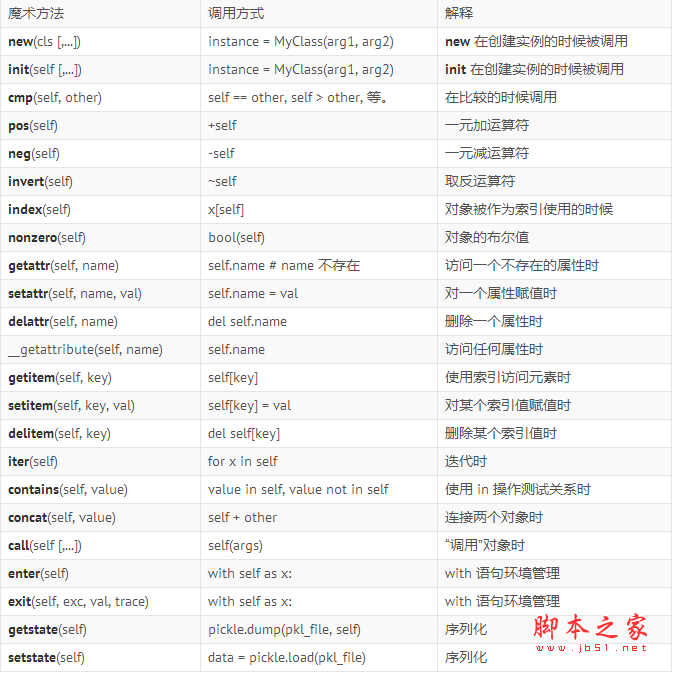Python实现的特征提取操作示例
本文实例讲述了Python实现的特征提取操作。分享给大家供大家参考,具体如下:
# -*- coding: utf-8 -*-
"""
Created on Mon Aug 21 10:57:29 2017
@author: 飘的心
"""
#过滤式特征选择
#根据方差进行选择,方差越小,代表该属性识别能力很差,可以剔除
from sklearn.feature_selection import VarianceThreshold
x=[[100,1,2,3],
[100,4,5,6],
[100,7,8,9],
[101,11,12,13]]
selector=VarianceThreshold(1) #方差阈值值,
selector.fit(x)
selector.variances_ #展现属性的方差
selector.transform(x)#进行特征选择
selector.get_support(True) #选择结果后,特征之前的索引
selector.inverse_transform(selector.transform(x)) #将特征选择后的结果还原成原始数据
#被剔除掉的数据,显示为0
#单变量特征选择
from sklearn.feature_selection import SelectKBest,f_classif
x=[[1,2,3,4,5],
[5,4,3,2,1],
[3,3,3,3,3],
[1,1,1,1,1]]
y=[0,1,0,1]
selector=SelectKBest(score_func=f_classif,k=3)#选择3个特征,指标使用的是方差分析F值
selector.fit(x,y)
selector.scores_ #每一个特征的得分
selector.pvalues_
selector.get_support(True) #如果为true,则返回被选出的特征下标,如果选择False,则
#返回的是一个布尔值组成的数组,该数组只是那些特征被选择
selector.transform(x)
#包裹时特征选择
from sklearn.feature_selection import RFE
from sklearn.svm import LinearSVC #选择svm作为评定算法
from sklearn.datasets import load_iris #加载数据集
iris=load_iris()
x=iris.data
y=iris.target
estimator=LinearSVC()
selector=RFE(estimator=estimator,n_features_to_select=2) #选择2个特征
selector.fit(x,y)
selector.n_features_ #给出被选出的特征的数量
selector.support_ #给出了被选择特征的mask
selector.ranking_ #特征排名,被选出特征的排名为1
#注意:特征提取对于预测性能的提升没有必然的联系,接下来进行比较;
from sklearn.feature_selection import RFE
from sklearn.svm import LinearSVC
from sklearn import cross_validation
from sklearn.datasets import load_iris
#加载数据
iris=load_iris()
X=iris.data
y=iris.target
#特征提取
estimator=LinearSVC()
selector=RFE(estimator=estimator,n_features_to_select=2)
X_t=selector.fit_transform(X,y)
#切分测试集与验证集
x_train,x_test,y_train,y_test=cross_validation.train_test_split(X,y,
test_size=0.25,random_state=0,stratify=y)
x_train_t,x_test_t,y_train_t,y_test_t=cross_validation.train_test_split(X_t,y,
test_size=0.25,random_state=0,stratify=y)
clf=LinearSVC()
clf_t=LinearSVC()
clf.fit(x_train,y_train)
clf_t.fit(x_train_t,y_train_t)
print('origin dataset test score:',clf.score(x_test,y_test))
#origin dataset test score: 0.973684210526
print('selected Dataset:test score:',clf_t.score(x_test_t,y_test_t))
#selected Dataset:test score: 0.947368421053
import numpy as np
from sklearn.feature_selection import RFECV
from sklearn.svm import LinearSVC
from sklearn.datasets import load_iris
iris=load_iris()
x=iris.data
y=iris.target
estimator=LinearSVC()
selector=RFECV(estimator=estimator,cv=3)
selector.fit(x,y)
selector.n_features_
selector.support_
selector.ranking_
selector.grid_scores_
#嵌入式特征选择
import numpy as np
from sklearn.feature_selection import SelectFromModel
from sklearn.svm import LinearSVC
from sklearn.datasets import load_digits
digits=load_digits()
x=digits.data
y=digits.target
estimator=LinearSVC(penalty='l1',dual=False)
selector=SelectFromModel(estimator=estimator,threshold='mean')
selector.fit(x,y)
selector.transform(x)
selector.threshold_
selector.get_support(indices=True)
#scikitlearn提供了Pipeline来讲多个学习器组成流水线,通常流水线的形式为:将数据标准化,
#--》特征提取的学习器————》执行预测的学习器,除了最后一个学习器之后,
#前面的所有学习器必须提供transform方法,该方法用于数据转化(如归一化、正则化、
#以及特征提取
#学习器流水线(pipeline)
from sklearn.svm import LinearSVC
from sklearn.datasets import load_digits
from sklearn import cross_validation
from sklearn.linear_model import LogisticRegression
from sklearn.pipeline import Pipeline
def test_Pipeline(data):
x_train,x_test,y_train,y_test=data
steps=[('linear_svm',LinearSVC(C=1,penalty='l1',dual=False)),
('logisticregression',LogisticRegression(C=1))]
pipeline=Pipeline(steps)
pipeline.fit(x_train,y_train)
print('named steps',pipeline.named_steps)
print('pipeline score',pipeline.score(x_test,y_test))
if __name__=='__main__':
data=load_digits()
x=data.data
y=data.target
test_Pipeline(cross_validation.train_test_split(x,y,test_size=0.25,
random_state=0,stratify=y))
更多关于Python相关内容感兴趣的读者可查看本站专题:《Python数据结构与算法教程》、《Python编码操作技巧总结》、《Python函数使用技巧总结》、《Python字符串操作技巧汇总》及《Python入门与进阶经典教程》
希望本文所述对大家Python程序设计有所帮助。
